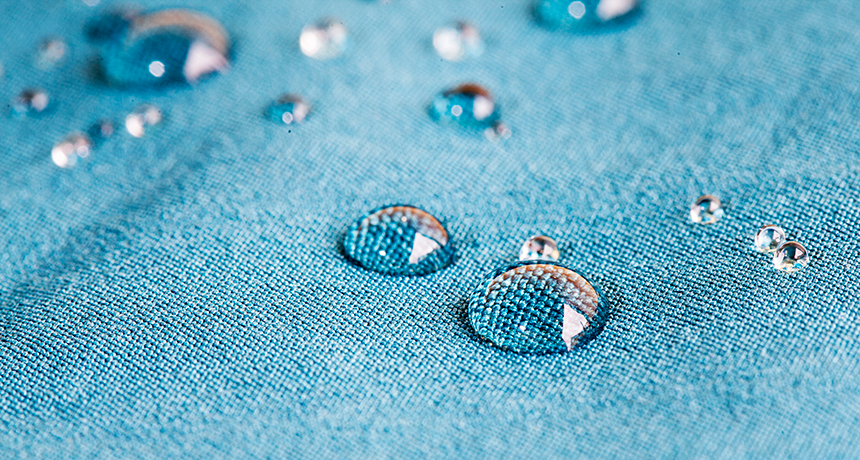‘Nonstick’ chemicals may undercut value of vaccinations
Immunizations may actually fail to protect children with the highest exposures

Many water- and stain-resistant fabrics have been treated with perfluorinated chemicals, such as PFOA and PFOS. But the production of those chemicals can pollute the environment — and people. New data show human exposures can compromise the ability of vaccines to work well.
ze_pedro/iStockphoto
By Janet Raloff
Studies have shown that nearly everyone today carries traces of nonstick chemicals — ones known as PFOA and PFOS — in their bodies. A new study in children has now linked low blood levels of these with a reduced ability of vaccinations to do their job. Vaccines should trigger the body to make disease-fighting antibodies. In kids with the highest PFOA and PFOS exposures, this didn’t appear to happen.
“We were shocked, to be frank, in the magnitude of the effect,” says Philippe Grandjean. He’s a doctor at the Harvard School of Public Health in Boston, Mass. He also was part of a research team that described these data January 25 in the Journal of the American Medical Association.
The nonstick pollutants belong to a class of chemicals called perfluorinated (Per-FLUOR-ih-NAY-ted) compounds, or PFCs. Coating frying pans and cookie sheets with them them can keep foods from sticking. Fabrics treated with them can resist water and stains. Many older treatments were marketed under such trade names as Teflon and Scotchgard.
The chemicals worked well. But making them allowed PFCs to enter the air and water. Because the chemicals don’t break down easily, they have built up in the environment. Today, PFCs taint air, water, food, wildlife — and people.
For its new study, Grandjean’s group followed 587 children from before birth through age 7. All lived in Denmark’s Faroe Islands (about midway between Norway and Iceland). The researchers measured PFCs in the blood of the kids’ moms during pregnancy. Later, they measured PFCs in the children at ages 5 and 7. Blood levels of the chemicals were about the same — or lower — than what has been seen in most Americans, Grandjean points out.
The Faroese kids received standard childhood vaccinations. Vaccines work by revving up the body’s immune system to make antibodies. Those antibodies should later help fight germs that could trigger a particular disease. To test how well the vaccines worked, the researchers measured antibody levels in babies. They measured them again before and after the kids got booster shots at age 5.
Kids with the highest PFC levels in their bodies tended not to have responded as expected to the vaccines. The one-third of children having the highest levels of PFOA, PFOS and a third related compound (one that goes by the nickname PFHxS) commonly showed an “inadequate response to the vaccinations,” Grandjean says. In such cases, he adds, “we can’t rely on a vaccine as being effective.”
Explains Grandjean, these data suggest the immune system is not working as it should in these kids. This now raises questions about whether these children will also be more vulnerable to allergy, asthma and other diseases.
Margie Peden-Adams is a toxicologist at the University of Nevada, Las Vegas. She was impressed by the new study’s findings. “Those of us in the field will be excited to see it,” she told Science News.
The immune system is one of the most sensitive to toxic risks, she says. In rodent tests, her team showed that PFOS exposures to the fetus and to adults cut antibody production in response to foreign substances (such as germs).
Emanuela Corsini of the University of Milan in Italy and her colleagues have done related studies in cells. And they saw related problems. Their tests turned up two different mechanisms for the apparent toxic effects of PFOA and PFOS on immunity.
Today, many PFC manufacturers have stopped using or are voluntarily phasing out both PFOA and PFOS, Corsini notes. Still, she outs out, these chemicals remain “of toxicological concern.” After all, she explains, because they don’t break down in the environment, they remain available to be picked up by foods and water. Moreover, their resistance to breakdown means the PFCs that an animal may pick up can later be transferred intact to any animal — including people — that might eat it.







